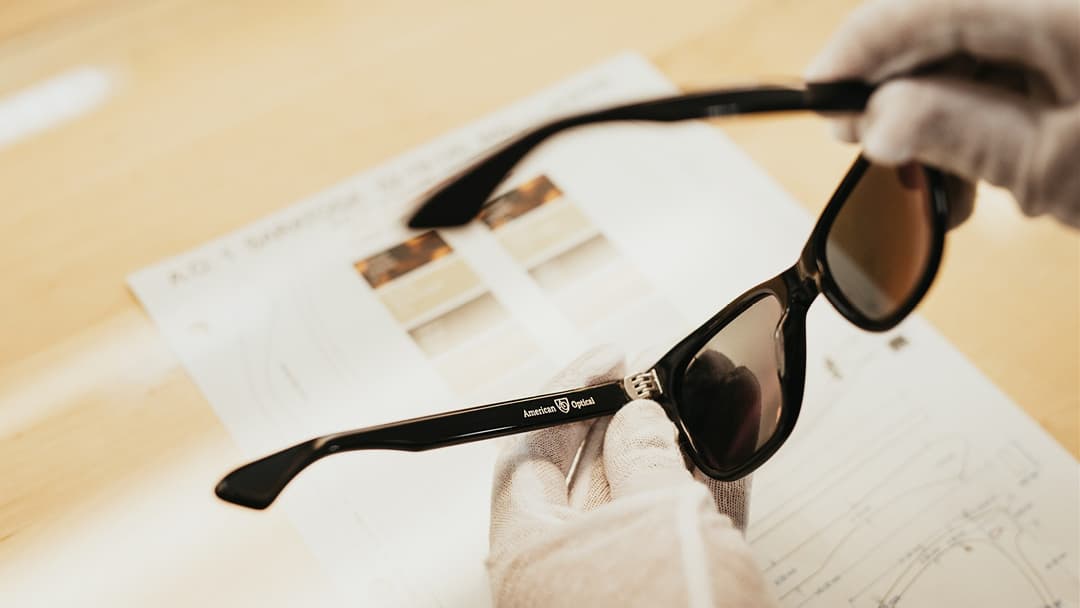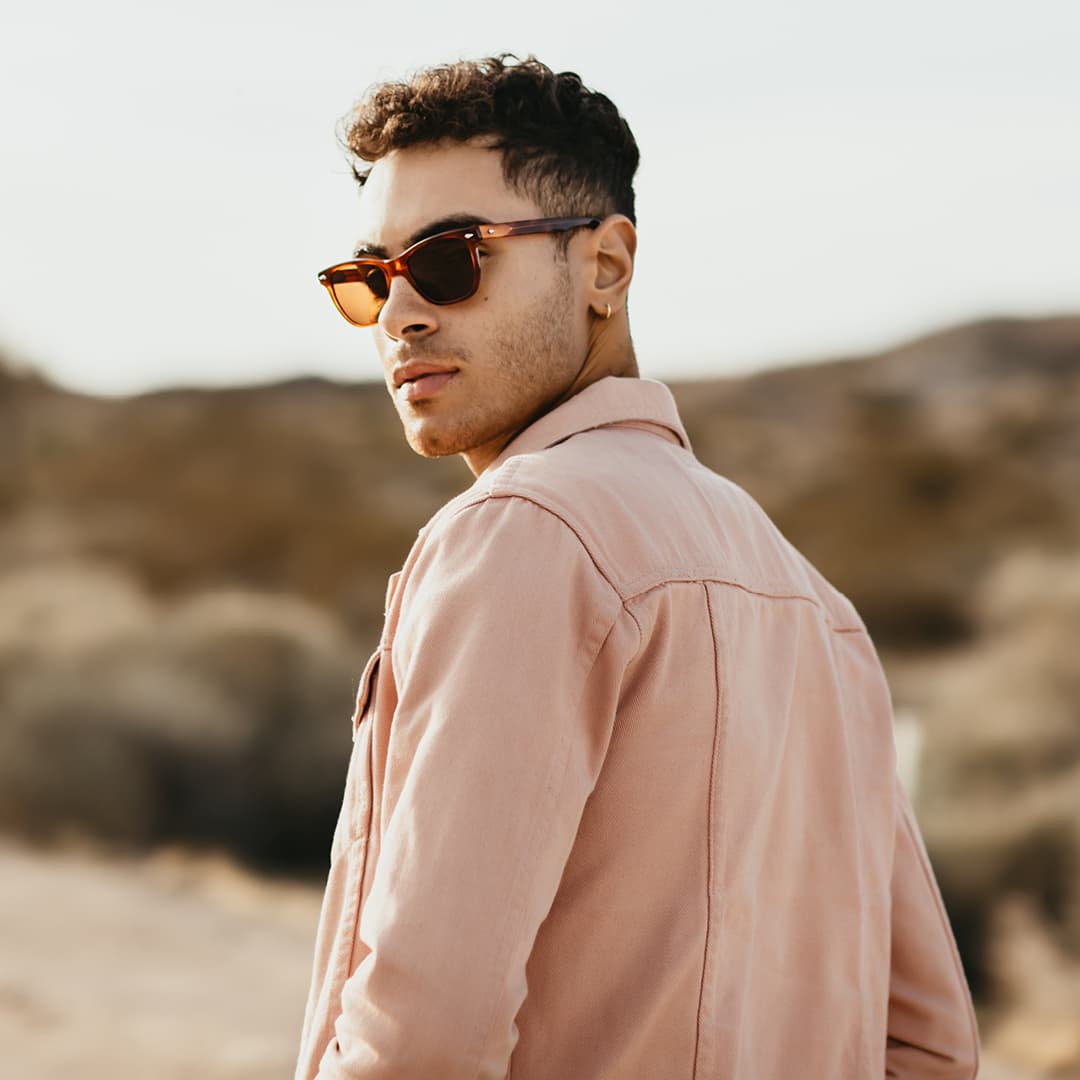
How Often Should You Replace Sunglasses?
How Often Should You Replace Your Sunglasses?
Sunglasses are essential for protecting your eyes from harmful UV rays and providing you with better vision in bright sunlight. They also have the power to instantly add a touch of chic style to any outfit – helping you look cool even during hot days! But how often should you replace your sunglasses?
When it comes to your sunglasses, knowing when to replace them is crucial for maintaining proper eye protection and ensuring clear vision. The risks of wearing old sunglasses that have passed their prime include eye strain, impaired vision, and potential damage to your eyesight. So, let's dive into the factors you should consider when deciding how often to replace your sunglasses.
The Risks of Wearing Old Sunglasses
Vision health is an essential component of overall body health, and for most people, not following a proper routine for regularly changing glasses can have dangerous consequences. Old lenses that are worn for long periods can cause eye strain, impaired vision, and even damage your eyesight in the long run.
Neglecting to change to the correct prescription when needed can also deliver devastating results and leave you struggling from head to toe. Therefore, it is essential to stay aware of any changes in vision or eye discomfort that may develop over time and act upon them promptly by replacing your glasses with a new prescription if necessary. Doing so will help reduce any potential dangers or risks and prevent serious vision damage.
How Long Do Sunglasses Last?
Sunglasses are essential for anyone who enjoys spending time outdoors, but how long do they last? While many sunglasses can last you several years, there are a variety of factors that can drastically shorten their lifespan. Factors such as exposure to heat, extended periods of sunlight, and regular contact with sand and water can all contribute to worn out lenses and frames.
To ensure your sunglasses stay in the best condition, look for glasses that are made with high-quality components and a scratch-resistant coating on the lenses.
Also, store them in a protective case when not in use to lengthen their durability over time. By investing in quality and taking proper care of your sunglasses, you'll be able to enjoy optimal eye protection for an extended period.
Signs That It Might Be Time to Replace Your Sunglasses:
1. Signs of Damage -
Look for signs of wear and tear that could render lenses ineffective.

The importance of looking out for signs of damage to your sunglasses cannot be understated. Not only do sunglasses offer uv protection, but they also guard our eyesight. From deep scratches in the lenses that affect any protective coating or frame to scuffs and tears, carefully inspecting these sunglasses will help you identify how much life they have left and what steps need to be taken to make sure that they can continue protecting your eyes.
Depending on the quality and make of your sunglasses, frequent wear and tear can render them ineffective long before it's time for a change—so look out for signs of damage before it's too late!
2. Cloudy Lenses -
If your lenses appear cloudy or foggy, it may be time for a new pair.
Sunglasses are part of many people's fashion ensembles and help protect the eyes from the sun's harmful UV rays. However, if your lenses appear cloudy or foggy, it may be time for a new pair as this indicates that they no longer offer adequate protection and the protective coating may have worn away.
Wearing sunglasses with cloudy lenses could lead to long-term damage to your eyes from the sun as they may no longer adequately absorb ultraviolet radiation. Investing in a new pair of quality sunglasses with up-to-date technology for UV protection and optimal clarity will give you peace of mind that your eyes are being properly cared for and shielded from ultraviolet radiation during whatever outdoor activities you undertake.
3. Poor Fit -
Make sure your sunglasses fit comfortably and securely.
Whether for fashion or for function, sunglasses are an essential part of any outfit and should always fit comfortably and securely. Poorly fitting sunglasses can cause the frames to slide down your nose and create unwanted gaps that let UV rays creep in.
Sunglasses that don’t fit well or are too small can allow too much of the sun’s rays in around the edges. Therefore, it is important to make sure that your sunglasses have a comfortable fit and be aware of changes in fit caused by activities, sweating, or vigorous movements.
4. Fading Color -
Are the frames fading and losing their color from UV radiation exposure over time
Overexposure to UV radiation can take a toll on your sunglasses, causing the frames to fade and lose their color over time. When you notice your once vibrant frames turning dull or discolored, it's a clear sign that your sunglasses are past their prime. Fading frames not only affect the aesthetics of your eyewear but can also indicate that the materials are deteriorating, compromising the overall durability of the sunglasses.
High-quality frames made from acetate or durable metals are less prone to fading, ensuring your shades stay looking fresh for longer. Replacing your sunglasses when the frames begin to fade will not only maintain a stylish appearance but also ensure optimal eye protection.
5. Scratches & Cracks
Check for scratches, cracks, or other signs of damage on the lenses
Inspecting your sunglass lenses for scratches, cracks, or any signs of damage is essential to gauge their effectiveness in protecting your eyes. Lenses with scratches can compromise your vision by distorting the view and causing glare. Similarly, cracked lenses may not provide adequate UV protection, exposing your eyes to harmful rays.
Regularly check the lenses for any imperfections, and if you notice any damage, it's time to replace your sunglasses. Opt for lenses with scratch-resistant coatings, and consider investing in sturdy sunglasses with impact-resistant properties for added durability and safety. You may also be able to consider replacement lenses if your frames are still in good shape.

6. Outdated Style –
Fashion trends evolve rapidly, and sunglasses are no exception. If you find yourself sporting outdated frames that no longer align with the latest styles, it may be time to consider an upgrade. Outdated sunglasses not only affect your overall look but may also lack the advanced features found in contemporary eyewear, such as improved UV protection and enhanced lens technology.
Replacing your old shades with new sunglasses that suit your taste and match current trends can elevate your fashion game while ensuring your eyes are well-protected. Opt for frames that are not only trendy but also offer the necessary UV defense to keep your eyes safe during sunny days.
Understand When UV Protection Starts to Diminish in Older Lenses
With UV exposure and radiation levels increasing due to climate change and lifestyle influence, it has never been more important to make sure your sunglasses are capable of providing adequate ultraviolet protection. To ensure you’re getting the right level of coverage, always look for lenses marked 100% UV Protection or UV 400.
For those who don't want to buy new sunglasses every year or two, invest in a pair of high-quality polarized lenses built to last.
How You Use and Store Your Sunglasses Determines Replacement Frequency
When considering how often to replace your sunglasses, it's important to factor in not only the type of lenses you choose and their potential for wear and tear but also how you use and store them.
According to a 2017 report from The Vision Council, 49% of American adults keep their sunglasses safely stored away when not being used, while 39% of those surveyed just put them down around the house, which can lead to more frequent damage. So if you're the one leaving your shades perched atop that mountain of papers on your desk or coffee table, it might be time to reconsider - after all, taking good care of your sunglasses means less time spent shopping for new ones.
Exposure to the elements will also affect how long your sunglasses last. If your shades are often exposed to extreme heat, saltwater, or other tough conditions, you may find yourself needing to consider more frequent replacement.
Invest in a Good Pair of Sunglasses
When it comes to investing in sunglasses, it's important to remember that you often get what you pay for. A pair of cheap sunglasses may look nice and protect your eyes from the sun's harmful rays temporarily, but after a few months of wear and tear, they may break down or become scratched and distorted.
Investing in a good pair of sunglasses is essential not just for fashion, but also for protecting your eyes. Not to mention, a quality pair can last much longer than the cheap ones available.
Enjoy Longer Wear with the Best Sunglasses from American Optical
All in all, the frequency of replacing your sunglasses will highly depend on how they are used daily and how they’re stored. Having a good pair of sunglasses that are resistant and durable might seem costly at first, but in reality, it’s definitely an investment you should make.
After some time, you might find yourself saving more money by choosing these options over low-cost alternatives which will need changing more frequently. If you have any trouble finding the pair of new sunglasses that are best for you, contact us and we’ll help find the best option possible! Until then, don't forget your shades - invest in quality eyewear from American Optical and take care of them to ensure longevity!
10% off your first purchase
Join our email list to be first to hear about new arrivals, limited-edition drops, sales, and more! Exclusions apply; cannot be combined with other discounts and offers.











